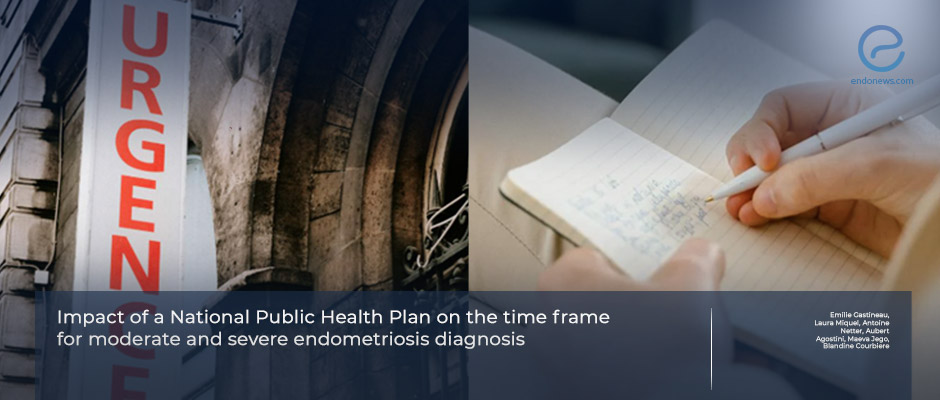Endometriosis Still Diagnosed Late, Despite National Awareness Efforts
Oct 9, 2025
Despite France’s National Health Plan, Women Still Wait Years for Endometriosis Diagnosis
Key Points
Highlights:
- Delays in diagnosis remain significant, particularly among younger women, despite France’s National Endometriosis Public Health Plan, which aimed to improve awareness and training among healthcare professionals.
- Median diagnostic delay remained approximately five years, indicating persistent systemic barriers.
- Dysmenorrhea was the most frequent presenting symptom, followed by chronic pelvic pain.
- Primary infertility was reported by the majority of patients and was associated with a shorter diagnostic delay compared to those whose main symptom was pain.
Importance:
- Despite public health initiatives and national awareness efforts, diagnostic delays in endometriosis persist.
- This finding underscores the need for broader education—not only for gynecologists but also for primary care physicians and emergency practitioners—to recognize early symptoms and refer patients sooner.
What’s done here:
- A monocentric retrospective cohort study comparing women diagnosed with moderate to severe endometriosis before and after the implementation of France’s National Endometriosis Public Health Plan.
- Evaluated changes in diagnostic delay, symptom patterns, and clinical characteristics to assess the plan’s real-world impact.
Key results:
- The median delay in diagnosis was 5 years.
- There was no statistically significant difference in diagnostic delay before and after the implementation of the National Endometriosis Public Health Plan.
- The most common symptom of the disease was dysmenorrhea.
- Primary infertility was prevalent and correlated with a shorter diagnostic interval.
- Younger age was associated with longer diagnostic delays, highlighting an ongoing need for age-targeted awareness and early recognition strategies.
Limitations:
- The sample size is quite small, that limits generalizability; recall bias may have influenced patient-reported timelines.
- The findings apply primarily to women with moderate to severe disease managed at a single tertiary center, not necessarily reflecting the broader population or milder cases.
From the Editor-in-Chief – EndoNews
"Despite unprecedented national attention to endometriosis in France, this study reveals that diagnostic delays remain stubbornly unchanged, even after the launch of the National Endometriosis Public Health Plan. The persistence of a median five-year lag between symptom onset and diagnosis underscores how deeply systemic barriers—ranging from underrecognition in primary care to limited access to specialized referral centers—continue to affect women’s health.
While the reduction from 5.7 to 4.2 years after the plan’s implementation suggests a modest trend toward improvement, the absence of a statistically significant change highlights that awareness campaigns alone are insufficient. Early education of healthcare providers, streamlined referral pathways, and integration of validated symptom-based diagnostic tools are urgently needed to close this persistent gap.
Ultimately, the findings serve as a reminder that national strategies must evolve beyond awareness to measurable action, ensuring that timely diagnosis and equitable access to expert care become the true markers of progress in endometriosis management."
Lay Summary
There are still significant delays in the diagosis of moderate and severe endometriosis, particularly among younger patients, despite ongoing efforts by public health authorities to increase awareness of the disease.
This conclusion comes from a new study by researchers in France, published in the Journal of Gynecology, Obstetrics and Human Reproduction. The authors emphasize that more research is needed to determine the long-term impact of the French National Endometriosis Public Health Plan, launched in February 2022 to improve awareness among healthcare professionals and reduce diagnostic delays.
The aim of the present study was to evaluate the time between the onset of symptoms and the diagnosis of endometriosis, and to determine whether this interval changed after the implementation of the national plan in February 2022.
To this end, a research team led by Dr. Blandine Courbière from the Department of Gynecology-Obstetrics and Reproductive Medicine, Hôpital La Conception / Aix-Marseille Université, Avignon Université, Marseille, France, conducted a monocentric retrospective cohort study.
The findings revealed that the median diagnostic delay was five years, ranging from 1.6 to 11.2 years. Importantly, there was no statistically significant difference in the time to diagnosis before and after the implementation of the National Plan — with a median delay of 5.7 years before the plan and 4.2 years after.
The researchers also found that the most common symptom of the disease was dysmenorrhea or painful periods seen in 73% of patients.
Moreover, the majority (65%) of patients experienced primary infertility.
The delay in diagnosis was significantly shorter in women who first presented with infertility, compared to those whose first symptom was pain, at 1.5 years compared to 6.9 years.
Finally, the researchers found that a younger age at the time of symptom onset was associated with a longer delay in diagnosis.
These results suggest that, while national awareness efforts are an essential step forward, further strategies are needed to enhance early recognition and referral for endometriosis, particularly among younger women.
Research Source: https://pubmed.ncbi.nlm.nih.gov/40818690/
diagnostic delay awareness dysmenorrhea period pain infertility

